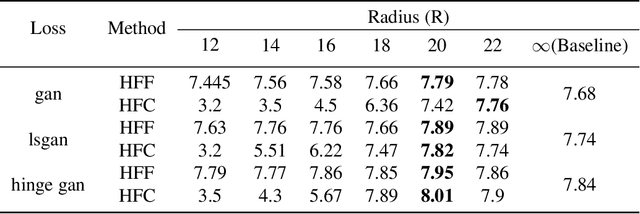Yanghui Hu
Are High-Frequency Components Beneficial for Training of Generative Adversarial Networks
Mar 20, 2021



Abstract:Advancements in Generative Adversarial Networks (GANs) have the ability to generate realistic images that are visually indistinguishable from real images. However, recent studies of the image spectrum have demonstrated that generated and real images share significant differences at high frequency. Furthermore, the high-frequency components invisible to human eyes affect the decision of CNNs and are related to the robustness of it. Similarly, whether the discriminator will be sensitive to the high-frequency differences, thus reducing the fitting ability of the generator to the low-frequency components is an open problem. In this paper, we demonstrate that the discriminator in GANs is sensitive to such high-frequency differences that can not be distinguished by humans and the high-frequency components of images are not conducive to the training of GANs. Based on these, we propose two preprocessing methods eliminating high-frequency differences in GANs training: High-Frequency Confusion (HFC) and High-Frequency Filter (HFF). The proposed methods are general and can be easily applied to most existing GANs frameworks with a fraction of the cost. The advanced performance of the proposed method is verified on multiple loss functions, network architectures, and datasets.
 Add to Chrome
Add to Chrome Add to Firefox
Add to Firefox Add to Edge
Add to Edge